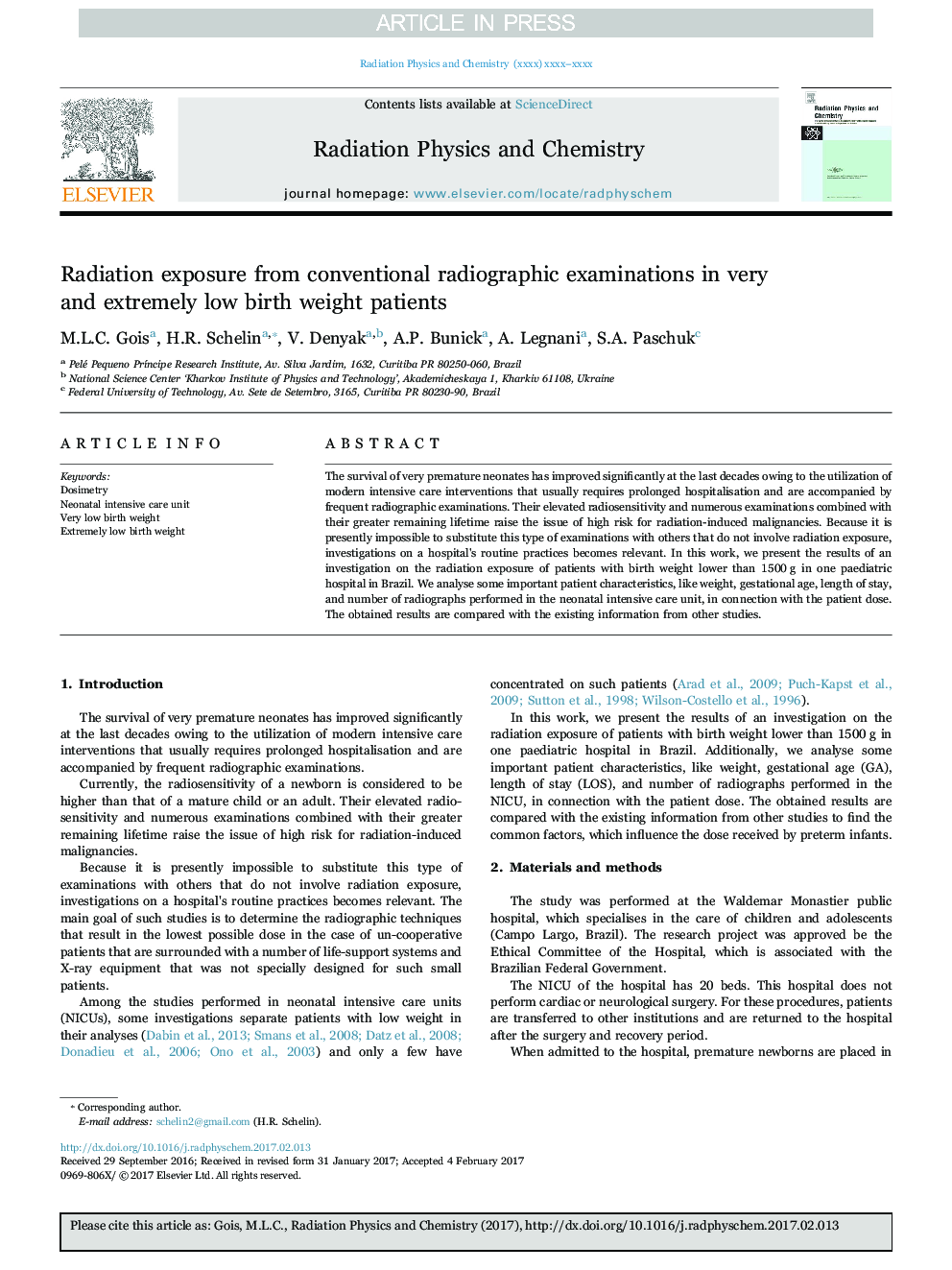| Article ID | Journal | Published Year | Pages | File Type |
|---|---|---|---|---|
| 5499088 | Radiation Physics and Chemistry | 2017 | 8 Pages |
Abstract
The survival of very premature neonates has improved significantly at the last decades owing to the utilization of modern intensive care interventions that usually requires prolonged hospitalisation and are accompanied by frequent radiographic examinations. Their elevated radiosensitivity and numerous examinations combined with their greater remaining lifetime raise the issue of high risk for radiation-induced malignancies. Because it is presently impossible to substitute this type of examinations with others that do not involve radiation exposure, investigations on a hospital's routine practices becomes relevant. In this work, we present the results of an investigation on the radiation exposure of patients with birth weight lower than 1500Â g in one paediatric hospital in Brazil. We analyse some important patient characteristics, like weight, gestational age, length of stay, and number of radiographs performed in the neonatal intensive care unit, in connection with the patient dose. The obtained results are compared with the existing information from other studies.
Related Topics
Physical Sciences and Engineering
Physics and Astronomy
Radiation
Authors
M.L.C. Gois, H.R. Schelin, V. Denyak, A.P. Bunick, A. Legnani, S.A. Paschuk,
